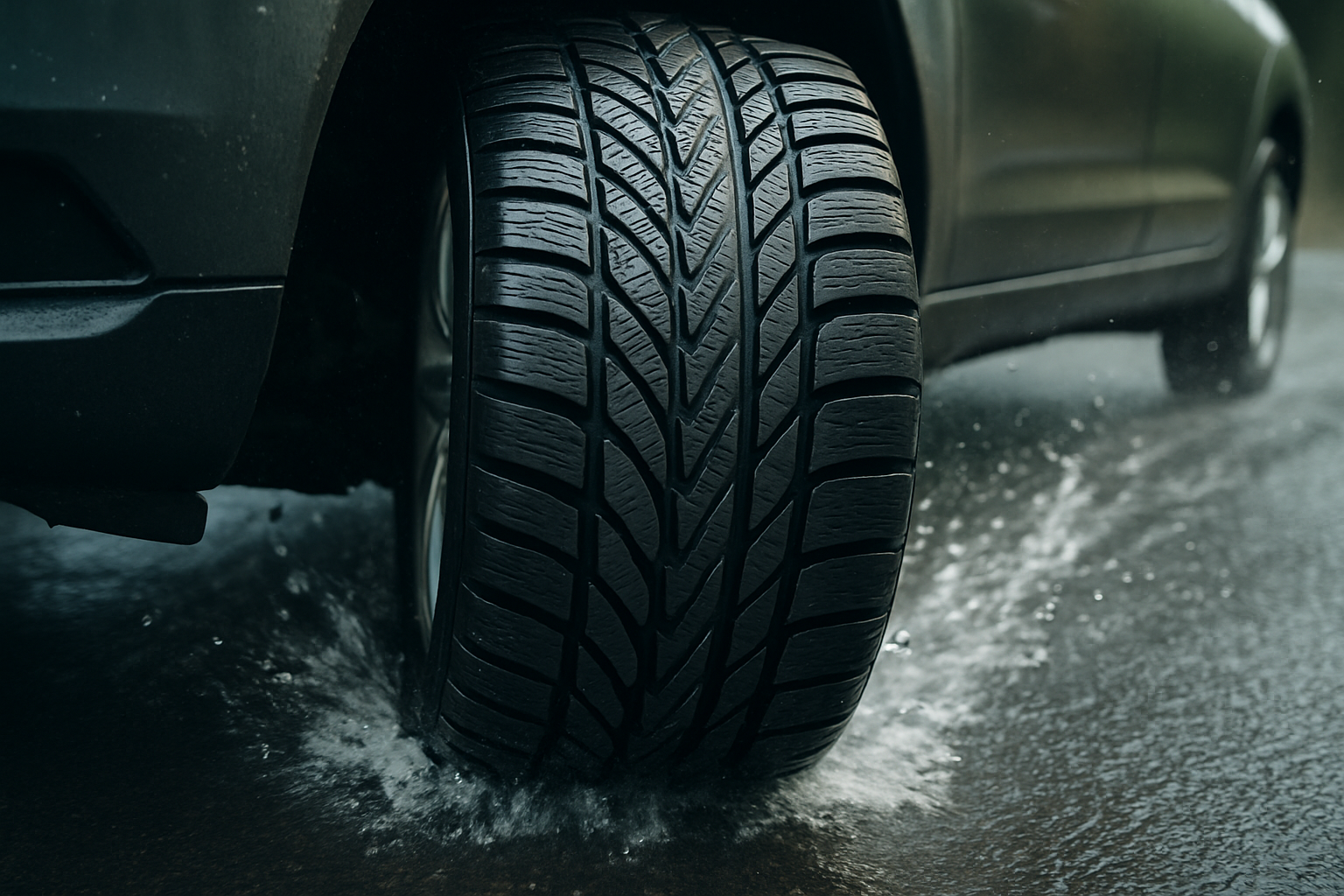Understanding Speed Ratings on Tire Sidewalls
Every tire sidewall contains a series of letters and numbers that provide crucial information about the tire's capabilities and specifications. Among these markings, the speed rating stands out as one of the most important indicators for vehicle safety and performance. This alphanumeric code tells drivers the maximum speed a tire can safely sustain under optimal conditions. Understanding these ratings helps ensure you select the right tires for your vehicle and driving habits, contributing to both safety and optimal performance on Mexican roads.

Tire sidewalls are covered with various markings that might seem confusing at first glance. These codes contain essential information about tire size, construction, load capacity, and speed capabilities. The speed rating, typically found at the end of the tire size designation, is represented by a letter that corresponds to a specific maximum speed. For instance, a tire marked as 205/55R16 91V has a V speed rating, indicating it can handle speeds up to 240 km/h under proper conditions.
Speed ratings were developed by tire manufacturers and standardized across the industry to help consumers match tires to their vehicle’s performance characteristics. These ratings assume the tire is in good condition, properly inflated, and not overloaded. The rating system ranges from A (the lowest) to Y (the highest), with some letters omitted to avoid confusion. Common ratings include S (180 km/h), T (190 km/h), H (210 km/h), V (240 km/h), W (270 km/h), and Y (300 km/h).
What Are the Different Tire Types and Their Speed Requirements?
Different vehicle types require different tire specifications based on their intended use and performance capabilities. Passenger cars typically use tires with S, T, or H ratings, which are sufficient for everyday driving conditions. These tires balance comfort, longevity, and cost-effectiveness while meeting the needs of most drivers in urban and highway environments.
Performance vehicles and sports cars require higher speed ratings such as V, W, or Y. These tires feature specialized construction with reinforced sidewalls and advanced rubber compounds that maintain stability at high speeds. The trade-off often includes shorter tread life and a firmer ride quality. SUVs and light trucks may use tires with varying speed ratings depending on whether they are designed for highway driving or off-road use.
Winter tires often carry lower speed ratings because their softer rubber compounds prioritize cold-weather traction over high-speed performance. However, this does not mean they are unsafe; rather, they are optimized for different driving conditions. All-season tires typically fall in the middle range, offering balanced performance across various conditions without excelling in any particular area.
How Does Tire Wear Affect Speed Rating Performance?
As tires age and accumulate mileage, their ability to perform at their rated speed diminishes. Tread depth plays a crucial role in maintaining the grip and heat dissipation necessary for safe high-speed driving. New tires typically have 8-10 millimeters of tread depth, but as this wears down to 3-4 millimeters, the tire’s performance characteristics change significantly.
Heat buildup becomes more problematic in worn tires because reduced tread depth affects the tire’s ability to dissipate heat generated by friction. This can lead to structural failure at high speeds, even if the tire still carries its original speed rating marking. Regular rotation, proper alignment, and maintaining correct inflation pressure help ensure even wear patterns and extend the period during which tires can safely perform at their rated speeds.
Damage from road hazards, improper storage, or exposure to harsh chemicals can also compromise a tire’s structural integrity. Sidewall damage, bulges, or cuts may not be immediately visible but can significantly reduce the tire’s safe operating speed. Professional inspections help identify these issues before they become safety hazards.
Which Tires Work Best for Different Seasons in Mexico?
Mexico’s diverse climate zones require different tire considerations depending on your location. Coastal and lowland areas with year-round warm temperatures can use standard all-season or summer tires with appropriate speed ratings for highway driving. These regions rarely experience conditions that would necessitate specialized winter tires.
Highland and mountainous regions, particularly areas above 2,000 meters elevation, may experience cold temperatures and occasional frost. While dedicated winter tires are rarely necessary, all-season tires with good cold-weather performance provide adequate safety margins. The speed rating should match your vehicle’s capabilities and typical driving speeds on mountain roads.
Rainy season considerations are important throughout Mexico. Tires with good wet traction ratings help prevent hydroplaning during heavy tropical downpours common from June through October. Tread patterns designed for water evacuation become more critical than speed ratings during these conditions, though both factors contribute to overall safety.
How Can You Decode the Complete Tire Marking System?
The complete tire marking contains multiple pieces of information beyond just the speed rating. A typical marking like P215/65R15 95H breaks down as follows: P indicates a passenger car tire, 215 represents the tire width in millimeters, 65 is the aspect ratio (sidewall height as a percentage of width), R means radial construction, 15 is the wheel diameter in inches, 95 is the load index, and H is the speed rating.
The load index number corresponds to the maximum weight each tire can support when properly inflated. This works in conjunction with the speed rating to ensure safe vehicle operation. Additional markings may include the DOT code (manufacturing date and plant), treadwear ratings, traction grades, and temperature resistance ratings.
Understanding these markings helps when replacing tires or upgrading to different specifications. Vehicle manufacturers specify minimum requirements in the owner’s manual, and deviating from these recommendations can affect handling, fuel efficiency, and safety. When replacing tires, matching or exceeding the original equipment speed rating ensures the vehicle performs as designed.
What Factors Should Influence Your Tire Selection?
Selecting the right tires involves balancing multiple factors beyond speed rating alone. Your typical driving conditions, annual mileage, and budget all play important roles. Drivers who primarily navigate city streets at moderate speeds may not need the highest speed-rated tires, allowing them to prioritize comfort and tread life instead.
Climate conditions in your area significantly impact tire selection. Areas with extreme heat require tires with good heat resistance, while regions with frequent rain need excellent wet traction. The speed rating should align with legal speed limits and your vehicle’s performance envelope, but practical considerations often matter more than maximum theoretical speeds.
Quality and brand reputation provide additional guidance when selecting tires. Established manufacturers invest in research and testing to ensure their tires meet or exceed rated specifications. Price differences often reflect these quality variations, though expensive does not always mean better for your specific needs. Consulting with tire professionals who understand local driving conditions provides valuable insights for making informed decisions.
Proper tire maintenance extends the usable life of any tire regardless of its speed rating. Regular pressure checks, rotations every 8,000-10,000 kilometers, and wheel alignments when needed help maximize both safety and value. Storing seasonal tires properly when not in use prevents premature aging and maintains their performance characteristics for future use.




